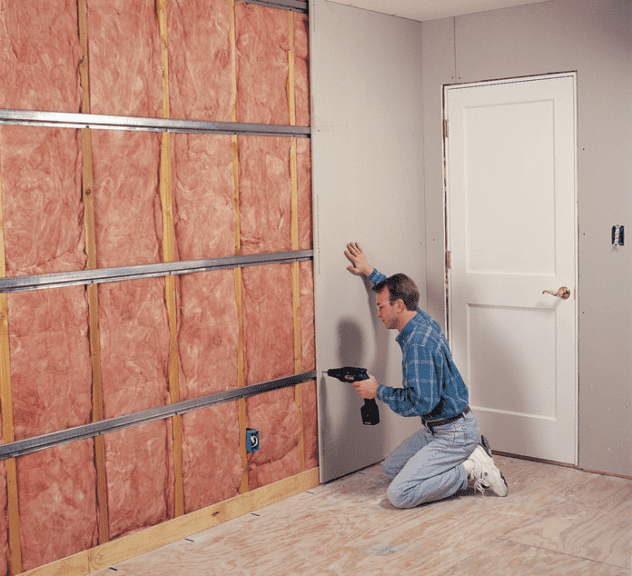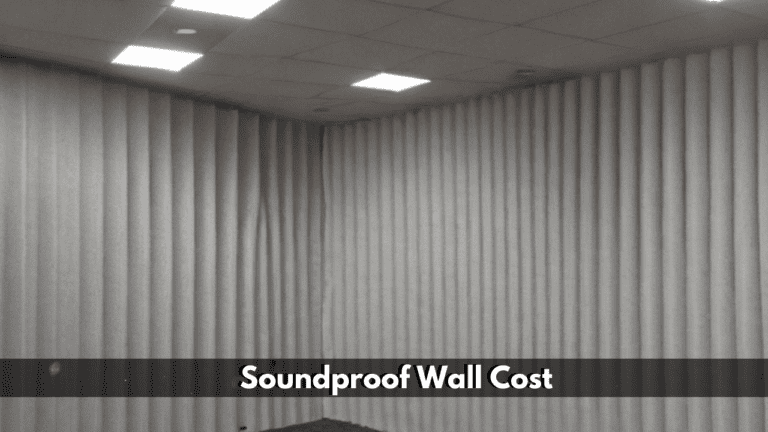Are you tired of being irritated by undesirable commotion in your living or working space? Are you seeking a successful arrangement to soundproof your dividers? If so, you’ve come to the proper put! This comprehensive direct will investigate the cost of soundproofing a divider and give you all the data you need to create an educated choice.
Understanding Soundproofing Walls
Before getting into the details of costs, it is important to understand what a soundproof wall is.
Soundproofing is the process of preventing sound from being transmitted between spaces, effectively reducing the spread of noise.
It should be noted that soundproofing is different from acoustic treatments, which are designed to reduce echo and reverberation in the room.
Many online resources recommend using acoustic materials to soundproof walls, but this can be misleading.
Sound-absorbing materials, such as acoustic panels and foam, are designed to control echo and absorb sound, not prevent it from being transmitted.
To achieve effective sound insulation, special sound insulation materials must be used.
Factors Affecting the Cost of Soundproofing a Wall

The price of acoustic wall insulation can vary depending on several factors. These factors include the size of the walls, the level of sound insulation required, the type of materials used and the complexity of the installation. To give you a better idea of the costs involved, we’ve broken down the costs based on a standard 30′ x 8′ wall.
Materials and Cost Breakdown
Here is a breakdown of the estimated cost per square foot for different soundproofing materials and the total cost for a 30′ x 8′ wall:
| Material | Est. Cost/Sq Ft | Material Needed for 30′ x 8′ Wall | Cost for a 30′ x 8′ Wall |
|---|---|---|---|
| Acoustical Sealant | $16.99 | 85 LF / Tube | $30 |
| Luxury Liner Mass Loaded Vinyl | $2.50 – $3.50 | 300 sq ft of 1lb MLV | $1,000 |
| Green Glue | $0.75 | 15 Tubes | $350 |
| RSIC Clips | $1.25 | 55 clips (16″ OC) or 45 clips (24″ OC) | $300 |
| 25 Gauge Hat Channel | $1.00 – $1.25 | 120 LF | $150 |
| 5/8″ Drywall | $0.40 – $0.60 | 8 Sheets (4′ x 8′ per) | $120 |
| Soundproof Drywall | $2.85 | 8 Sheets (4′ x 8′ per) | $730 |
| BlocknZorbe Sound Panels | $8.00 | 30 Sheets (2′ x 4′) – 2″ Thick | $1,900 |
Please note that these costs are estimates and may vary by provider and location. Also, consider labor costs, which can range from $40 to $150 an hour depending on the complexity of the project and the experience of the contractor.
Soundproofing Methods and Combinations
Now that we have an understanding of the costs involved, let’s explore some commonly used soundproofing methods and combinations:
- Green Glue + 5/8″ Drywall on top of Existing Drywall: This method involves applying Green Glue, a viscoelastic compound, between two layers of drywall. The additional layer of drywall helps to block sound transmission.
- Mass Loaded Vinyl (MLV) + 5/8″ Drywall: Mass Loaded Vinyl is a dense, flexible material that effectively blocks sound. When combined with an extra layer of drywall, it provides excellent soundproofing results.
- RSIC Clips + 5/8″ Drywall: RSIC (Resilient Sound Isolation Clip) Clips are designed to decouple the drywall from the studs, minimizing sound transmission. Adding an extra layer of drywall further enhances the soundproofing.
- RSIC Clips + 5/8″ Drywall + Green Glue + 5/8″ Drywall: This advanced method combines the benefits of RSIC Clips, Green Glue, and multiple layers of drywall to achieve maximum soundproofing performance.
It’s important to consult with a soundproofing professional to determine the best combination of materials and methods based on your specific requirements and budget.
Read : How to Soundproof a Stud Wall Like a Pro
What to Avoid when Soundproofing a Wall
When soundproofing a wall, it’s crucial to avoid certain materials and methods that may not provide effective results. Here are some things to avoid:
- Acoustic Panels: Acoustic panels are designed for echo control and sound absorption, not for soundproofing. They won’t effectively block sound transmission between spaces.
- Acoustic Foam: Similar to acoustic panels, acoustic foam is primarily used for reducing reverberation and echo within a room. It does not provide significant soundproofing benefits.
- Soundproof Paint: While some paints claim to have soundproofing properties, they are generally designed for acoustic treatments, not for blocking sound transmission.
Hanging Anything on the Wall: Unless the item is a dense, airtight barrier that can provide 100% coverage, it won’t effectively block sound. Avoid relying solely on hanging objects for soundproofing purposes.
Conclusion
Wall insulation can significantly improve the quality of your living or working environment by reducing the spread of harmful noise. Although the cost of soundproofing can vary based on several factors, such as the size of the wall and the materials used, it is an investment that can pay dividends in the long run.
Remember to choose specialized soundproofing materials and methods that are specifically designed to block sound transmission.
Avoid acoustic materials used for echo control and sound absorption. By following these guidelines and consulting a professional, you can achieve effective soundproofing and create a quiet and peaceful space.
